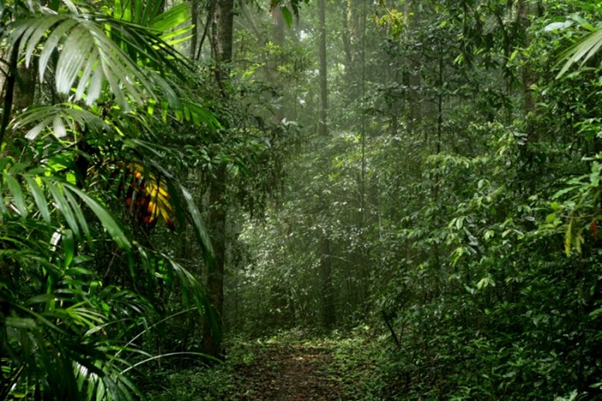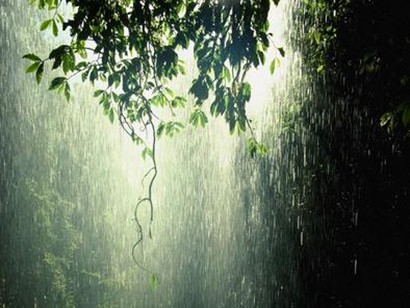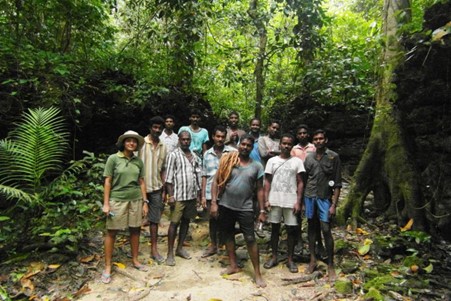
The Indian Meteorological Department (IMD) on Friday, 26th April 2024 said that 2024 could be the hottest year on record and can surpass 2023, which was marked as the warmest year on record in terms of temperature. One of the primary causes of heatwaves in India and other parts of world is global warming, which refers to the long-term increase in Earth’s average temperature due to human activities such as burning fossil fuels, deforestation, and industrial activities. We need to nurture more and more rainforests in our country and globally.
The Paris Agreement is an international treaty on climate change that was adopted in 2015. The treaty covers climate change mitigation, adaptation, and finance. The Paris Agreement was negotiated by 196 parties at the 2015 United Nations Climate Change Conference near Paris, France.
The Paris Agreement’s central aim is to strengthen the global response to the threat of climate change by keeping the global temperature rise in this century well below 2 degrees Celsius above pre-industrial levels and to pursue efforts to limit the temperature increase even further to 1.5 degrees Celsius. The Paris Agreement recognized the need for developing countries to receive climate finance in return for the net emissions reductions that they have accomplished by slowing deforestation.
Rainforests are forest ecosystems characterized by high levels of rainfall, an enclosed shade, and high species diversity. Tropical rainforests are the best-known type of rainforest. They are found widely around the world, including temperate regions in Canada, the United States, and the former Soviet Union. They help the most in maintaining ecological balance, including storing hundreds of billions of tons of carbon, shielding against flood and drought, soothing soils, influencing rainfall patterns, and providing a home to wildlife and Indigenous people. Rainforests are also the source of many useful products upon which local communities depend.
The Himalayan kingdom of Bhutan is home to between 900,000 and 2,100,000 people who are among the poorest in Asia. About 80 percent of the country’s population is sustained by subsistence agriculture, while Bhutan’s main export is electricity (to India). Bhutan is increasingly relying on high-end tourism for bringing in revenue: visitors are charged a minimum of $200 a day, which is shared between the government and private travel companies. Currently less than 10,000 visitors visit Bhutan each year, although there is no longer a cap on the number of foreigners allowed to visit the country.
Around 70 percent of the country is forested and Conservation International lists it as one of the world’s biological hotspots. However, with rising timber prices, there is concern that its forests will face increasing pressure. Additionally, a significant proportion of the population relies on forests for fuelwood collection and construction material, so as the country grows so will the impact on the Bhutan’s environment. Realizing that there could be problems in the future, the government passed a law requiring that 60 percent of the country remain forested in permanence.

Tropical rainforests typically occur in the equatorial zone between the Tropic of Cancer and Tropic of Capricorn, latitudes that have warm temperatures and relatively constant year-round sunlight. Tropical rainforests merge into other types of forest depending on the altitude, latitude, and various soil, flooding, and climate conditions. These forest types form a medley of vegetation types which contribute to the incredible diversity of the tropics.
India has three major rainforests in India lie mainly in the Andaman and Nicobar Islands, Western Ghats and the NorthEast Region. However, some smaller ones can even be found in remote locations like Odisha, Naga Hills, and Manipur.

The best example of a tropical evergreen forest in India is found in the Andaman and Nicobar Islands. What makes this place more special is the large variety of flora and fauna. The Andaman Islands have rare plant and animal species that are believed to have passed on from other nearby countries such as Myanmar, Thailand, and Bangladesh.
It is believed that there over 2200 variety of plants grow in the Andaman Islands, making it the richest biosphere in India. These tropical rainforests receive on an average a total of 2000 mm of rainfall throughout.
The most isolated, dense, and unspoiled rain forests in India can be found in the Assam region of Northeast India. Although the forests are majorly in Northern Assam, traces of the same are found in Nagaland, Manipur, Mizoram, and Tripura. The rainforests in the Assam region are characterized by low-lying hills that have a dense forest cover throughout the year and an average height of 900 meters. This is the most popular rainforest in India.
Overall, Northeast India is famous for its moist sal monsoon forests that can be found in the Assam region as well. The region is home to many species of wild monkeys like Rhesus Macaque, Assamese Macaque, Slow Loris capped Langurs, Pig-tailed Macaque, Stam-tailed Macaque and Hoolock Gibbons. This rainforest in Assam also has a significant population of wild elephants.
But the bulk of the world’s tropical rainforest rests in the Amazon Basin in South America. The Congo Basin and Southeast Asia, respectively, have the second and the third largest areas of tropical rainforest. Rainforests also exist on some the Caribbean islands, in Central America, in India, on scattered islands in the South Pacific, in Madagascar, in West and East Africa outside the Congo Basin, in Central America and Mexico, and in parts of South America outside the Amazon. Brazil has the largest extent of rainforest of any country on Earth.
Green leaves and vegetation play a critical role in climate change. We know that during photosynthesis, plants use carbon dioxide and give out oxygen, thereby reducing atmospheric carbon dioxide. It is said that a big tree uses 1.75 tonnes of carbon. But how does one measure or assess the green wealth of a region? This can be indicated by comparing the surface area of all the leaves to the land area possessing it. Consider one arecanut (supari) farm.
The Amazon is just one of the world’s many rainforests – with each playing a pivotal role in the planet’s health. Other across Latin America can be found from Mexico to Panama, and all the way to the temperate rainforests of Chile – home to the world’s southernmost rainforest.
Rainforests are also home to an estimated 50 million people – with more than a billion people depending on them for their livelihoods. Expert knowledge of plants and their properties, of the seasons, and of animal interactions, means local people are the best custodians of tropical forest. In fact, forest that is managed by Indigenous peoples and local communities has lower deforestation rates than forest that is managed by governments. Recognition of Native land rights and formalization of land ownership is one of the best ways to secure the future of the world’s rainforests.
How do rainforests work – and why are they so special? Most of the world’s rainforest is found in the tropics – between the Tropic of Cancer and the Tropic of Capricorn – which cover 40% of the world’s land area and contain 78% of all species. They have the perfect conditions for photosynthesis: sunlight, water, and warmth.
As trees transpire water, they generate the clouds that bring rain – not just to the tropics, but across hemispheres – with tropical forests playing a vital role in atmospheric circulation across continents.
Rainforest trees are specially adapted to their environment. In the highest canopy, they have a broad “crown” to capture full sunlight, while in the lower canopy the trees are adapted to grow mostly in the shade. On the forest floor there are shade-loving ferns that use sunflecks that break through the canopy. Epiphytes (plants that perch on other plants) are adapted to grow without soil and some species trap water in their cone-shaped leaves, attracting insects to drink, which excrete and provide nutrients for the plant to subsequently grow. There’s even a frog that lays eggs in these leaf-pools, where tadpoles can later be found swimming.
These tropical rainforests are one of the world’s most “hyper diverse” ecosystems. A survey of the Amazon rainforest in Ecuador, for example, revealed more than 280 species of tree per hectare – more than in the entire European tree flora. In total, there may be as many as 53,345 species of tree in the tropics. Such species richness in plants leads to great diversity in all forms of life: insects, fungi, birds, and animals. Amazingly, known species may be a fraction of the total: only 1.7 million of a possible 5 – 10 million species have been identified.
This immense diversity applies to human culture in the rainforest as well as to flora and fauna. Nearly 5,000 different languages are spoken in the highly biodiverse regions of the planet, with the world’s highest density of languages found in Papua New Guinea, a mountainous and densely forested country north of Australia.
Why are rainforests so important to our planet?
As well as being home to millions of people, rainforests play a critical role as a carbon sink, and tropical rainforests store a quarter of the carbon in our terrestrial biosphere – despite only accounting for 7-12% of the ice-free land surface helping regulate the Earth’s climate. New tree growth also captures carbon from the air. Yet, the reverse is also true; when trees are cut down, dangerous amounts of carbon are released back into the atmosphere.
Brazil has the largest extent of rainforest of any country on Earth. Rainforests provide important ecological services, including storing hundreds of billions of tons of carbon, buffering against flood and drought, stabilizing soils, influencing rainfall patterns, and providing a home to wildlife and Indigenous people.
To save India’s rainforests, we must first value them. We can’t develop the nation at any cost. It is a growing urgency to protect our ecological heritage. Environmentalists and civil society members who work/stay in the Western Ghats agree that rainforests face three kinds of threats today: degradation, destruction, and fragmentation due to development needs, and conversion of land for agricultural/commercial purposes. Let’s wake up before it’s too late.













































